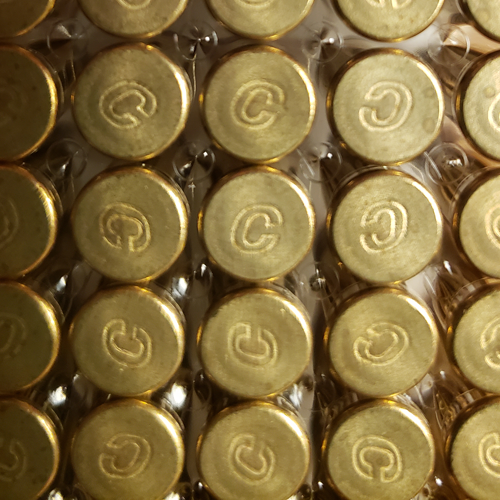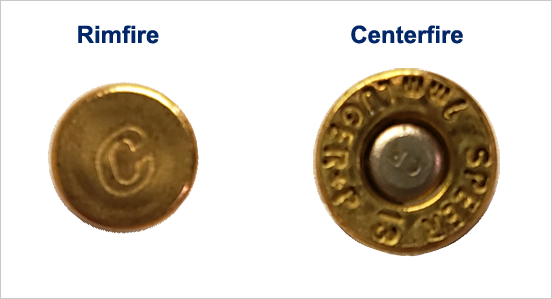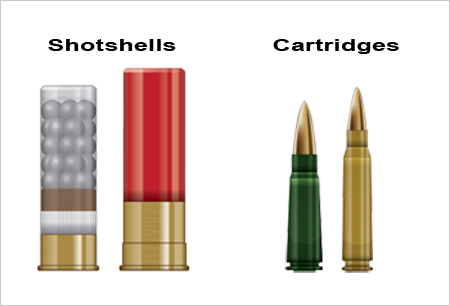Many first time gun buyers find the topic of ammunition confusing. Here, we'll explain some of the basics about rimfire cartridges.
Rimfire Cartridges are Used in Rifles and Handguns
Rifle and handgun ammunition, called cartridges (or rounds), fall into two main categories: centerfire or rimfire.
The terms "rimfire" and "centerfire" describe the type of ignition system within a particular cartridge.

What's the Difference Between a Cartridge and a Bullet?
A cartridge includes a metal casing which holds the primer, powder, and bullet.
The bullet is the projectile that shoots out of a gun, it is not the entire cartridge or round. Once the gun's firing pin hits the primer, this causes a tiny explosion which ignites the gunpower and propells the bullet out of the barrel.

The Anatomy of a Rimfire Cartridge
In a rimfire cartridge, the primer material is around the "rim" or base of the cartridge and the primer strike which ignites the powder is on the outside edge of that cartridge.
Common types of "rim fire" ammo are 22LR, 22MAG. and .17HMR.
Because of their size and how rimfire ammo is made, most rimfire ammo cannot be re-loaded.

Pros and Cons of Rimfire Cartridges
Rimfire cartridge casings need to be made of pretty thin metal in order for the firing pin to be able to hit the rim hard enough to ignite the powder. If the casing was made of thicker metal, a firing pin hitting the rim would not have enough force to ignite the power.
The upside to using a thin metal for the casing is that rimfire ammunition is relatively inexpensive as compared to centerfire ammunition.
The downside to using a thin metal is that only small caliber ammunition can be made this way. Large caliber ammunition requires more powder to expel the bullet and a much larger case to hold the powder.
Consequently if thin metal was used in larger caliber ammunition, the casing would not be able to withstand the amount of pressure that a larger caliber cartridge requires and would blow apart.
Another upside of rimfire cartridges is they do not produce much recoil. Lower recoil can be a benefit if someone is new to shooting.

Differences Between Rifle/Handgun Ammo and Shotshells
Shotgun ammunition is called a shotshell. Shotgun ammo is typically broken down into three categories: birdshot, buckshot, and slugs.
A shotshell consists of a cylindrical casing filled with metallic pellets. The casing is typically made of paper or plastic. This tube sits on top of a brass base which holds the gun powder. Inside of the casing, above the powder, there is usually a wad of paper or plastic material which holds the shot in the upper end of the case.
Rifle and handgun ammunition is called a cartridge (or round). A cartridge includes a metal casing, powder, primer and bullet.



